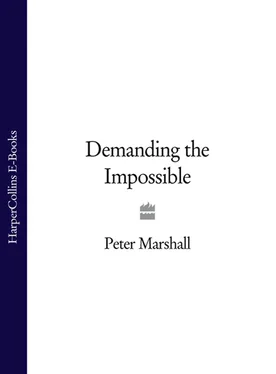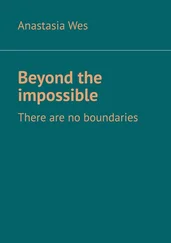Taoism was not aimed by an elite at peasants to make them more docile and obedient. The Taoists’ social background tended to be from the small middle class, between the feudal lords and the mass of peasant farmers. Nor were they merely offering advice on how to survive in troubled times by yielding to the strong, keeping a low profile, and by minding their own business. On the contrary, Taoism was the philosophy of those who had understood the real nature of temporal power, wealth and status, sufficiently well to find them radically wanting. Far from being a philosophy of failure or quietude, Taoism offers profound and practical wisdom for those who wish to develop the full harmony of their being.
While the Taoists have long been recognized as forerunners of anarchism, the libertarian tendency within Buddhism is not immediately so obvious. It is difficult to reconcile the teachings of the Buddha, for instance, with the triumphant State in modern Sri Lanka, where Sinhalese nationalism is supported most vehemently by the Buddhist clergy. But as with contemporary Taoism ( Tao chiao ) and organized Christianity, the distortions of institutionalized religion do not invalidate the original message. The poet Gary Snyder has not been the only one to find in ‘Buddhist anarchism’ a positive force ‘with nation-shaking’ implications. 15
Buddhism was originally an Indian religion, founded in the fifth century BC by Siddhartha Gautama, known as the Buddha (the enlightened one). Buddha found the cause of evil in this world to be ignorance which encourages a person to try and satisfy his or her desires. Craving, whether for possessions, wealth, power or status, inevitably brings suffering and pain. But there is a way out. The four ‘Noble Truths’ which Buddha taught may be summed up as: ‘(a) the omnipresence of suffering; (b) its cause, wrongly directed desire; (c) its cure, the removal of the cause; and (d) the Noble Eightfold path of self-development which leads to the end of suffering.’ 16
To avoid suffering it is therefore necessary to overcome one’s ego and eradicate all desire. To escape the painful cycle of rebirth in this world of illusion or maya , the individual must also try and become enlightened and realize that he or she ultimately has no self. Only by recognizing that sansara , the wheel of life, is nirvana, nothingness, will a person achieve complete liberation.
In the beginning Buddhism was principally restricted to ethics and meditation exercises. It began to spread in India five hundred years prior to Christ and separated from Hinduism by rejecting the scriptures, rituals and social system. It eventually split into two separate branches, one becoming more rationalistic, formalized and scholastic (Theravada) and the other more mystical (Mahayana). By 1200 Buddhism had practically disappeared in India, but became well established in Sri Lanka, Tibet and Thailand.
While institutional Buddhism has been ready to support inequalities and tyrannies, the disaffiliation, voluntary poverty and traditional harmlessness of practising Buddhists express a strong libertarian sensibility. Snyder has found in the practical systems of meditation developed by Mahayana Buddhism a powerful means of liberating individuals from their ‘psychological hang-ups and cultural conditionings’. He also believes that Buddhist Tantrism, or Vajrayana, offers probably the finest and most modern statement of the ancient view that ‘man’s life and destiny is growth and enlightenment in self-disciplined freedom’. 17 But it was in its Zen form however that Buddhism developed its libertarian potential to the fullest. 18
Zen Buddhism developed in China after it was brought from India in the sixth century. During the following five hundred years, the Chinese called the school Ch’an. It reached Japan in the twelfth century where it came to be known as Zen. Here two main sects developed, the first Rinzai, which carried on the ‘sudden’ technique of the founder, and the second Soto, the more gentle way.
Zen has rightly been called the ‘apotheosis of Buddhism’. 19 It is uniquely iconoclastic, attempting to reach truth and enlightenment by ultimately transcending the use of concepts, scriptures, and ritual. Where Theravada Buddhism became neatly arranged and systematized, with its twelve-fold chain of Causation, Zen adepts see in the Buddha the first rebel: ‘The Buddha was not the mere discoverer of the Twelvefold Chain of Causation,’ Suzuki informs us, ‘he took the chain in his hands and broke it into pieces, so that it would never again bind him to slavery.’ 20 The familiar props of religion are thrown away. The four central statements of Zen are:
A special transmission outside the Scriptures;
No dependence upon words or letters;
Direct pointing to the soul of man;
Seeing into one’s nature and the attainment of Buddhahood. 21
Traditionally Zen aspirants have learned from a teacher. He is usually called master, but more in the sense of schoolmaster than lord. His task is to help them break out of their everyday perceptions and intellectual habits. Buddhist monks are therefore exemplars, not intermediaries between the individual and God like Christian priests. They may carry sticks and not be averse to using them, but the blows are ways of shaking people out of their habitual way of seeing. In the Rinzai school, where the treatment is particularly vigorous, the discipline is used primarily to develop the pupil’s character from within and to increase his or her moral strength.
Zen thus offers a fiery baptism. However rough or gentle, it is intended to bring the student back to his original state of freedom which he has lost through ignorance. It is aimed at creating self-disciplined freedom, not dependence on masters. The successful Zen practitioner controls sound, colour and form and lives out the truth as he sees it. He leaves behind the rules of social and monastic life which helped him on his way. Even the robes which the monks wear and the bells which call them to their meditation are ladders to be finally discarded.
While a teacher may point the way, the individual must ultimately make his own choices and walk alone on his journey. Awakening cannot be achieved by another’s power. The Buddha said: ‘Work out your own salvation with diligence.’ 22 Buddhism thus knows no authority for truth save the mindfulness of the individual, and that is authority for himself alone. It is very egalitarian: everyone can become enlightened on their own through learning by direct and immediate experience. When Daiju visited the teacher Baso in China, and told him he was seeking enlightenment, Baso said: ‘You have your own treasure house. Why do you search outside?’ 23
In China, the Ch’an Zen masters did not follow the Buddha but aspired to be his friends and to place themselves in the same responsive relationship with the universe. Zen is an experience and has never become the doctrine of a sect. There are no set rules or regulations; the end at all times dominates the choice of means. As the greatest exponent in China Wei Lang (also known as Hui-neng) declared: ‘If I tell you that I have a system of Law to transmit to others I am cheating you. What I do to my disciples is to liberate them from their own bondage with such devices as the case may need.’ 24
The aim is to achieve a state of enlightenment in which one sees directly into one’s own nature and realizes that it is not separate from Nature, but part of an organic whole. Opposites are transcended. One feels clear, calm, whole. One becomes uncircumscribed and free. One is beyond conventional definitions of good and evil, moral codes and laws. If you have Zen, you have no fear, doubt or craving. You live a simple life, serene and complete:
Читать дальше












